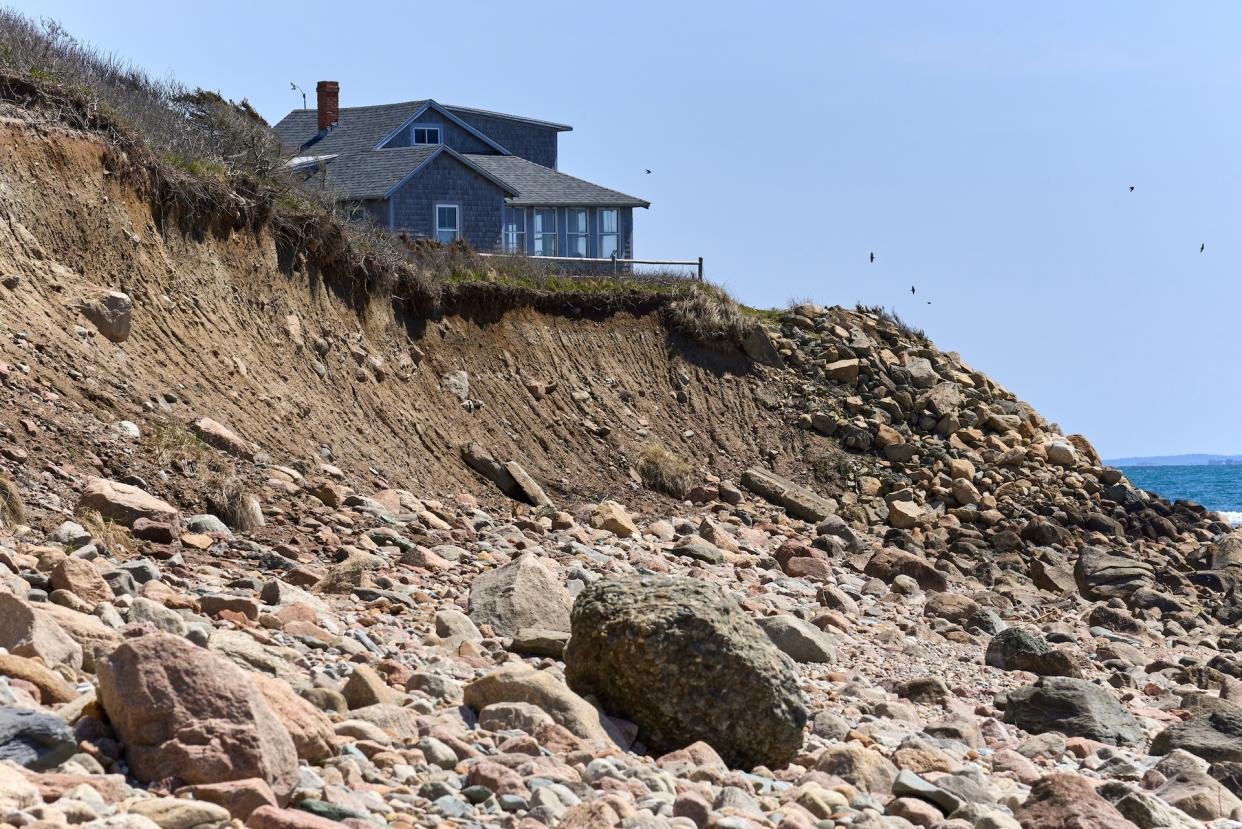Engineers deploy 'sand motor' to protect shorefront communities from erosion — though it may be too late for some areas

What if the answer to saving West Africa's rapidly disappearing coastline is a massive sand sculpture?
The "sand motor" is an innovative approach to managing coastal erosion that the Netherlands pioneered, according to Grist. Instead of the typical strategy of dumping replacement sand evenly along eroding beaches, the sand motor approach builds out one section of the coast with a huge amount of sand that then naturally redistributes to the rest of the coastline over time.
While these carefully engineered sand landscapes require a significant upfront investment, they protect more shoreline and last far longer than other nourishment methods — a massive win-win.
Grist reported that The World Bank recently financed an 8 million cubic yard sand motor in Benin, a small nation in West Africa where miles of beaches have vanished since 2000. Parts of Benin's coast are eroding up to 45 feet per year, threatening roads, fishermen's livelihoods, and tourism.
The project, about one-third the size of the original sand motor in the Netherlands, aims to provide a longer-term, more cost-effective solution than the concrete barriers and rock walls that have failed to slow Benin's rapid erosion so far.
This creative approach is a game-changer for coastal communities in developing countries that can't afford to constantly rebuild their beaches as sea levels rise. The World Bank hopes projects like Benin's could work in other regions to embrace the sand motor as an eco-friendly way to protect vulnerable shorelines.
Watch now: What would Alex Honnold do as dictator for a day?
"In the U.S. and other countries, they can afford to replenish often," Peter Kristensen, an environmental economist at the World Bank, explained to Grist. "It's harder for the African countries to afford that kind of replenishment on a regular basis."
However, according to coastal erosion expert Rob Young, the sand motor approach likely wouldn't work in the U.S.
"In the U.S., we have lots of coastal resort communities where the houses are on the edge of the sea, right now, and we're scrambling to keep sand in front of them," he said, per Grist "If you look at what is down drift of the sand motor on the coast of Holland, they don't have buildings teetering on the edge.
"By working with nature instead of against it, the sand motor offers an ingenious, longer-lasting way to safeguard coastal communities most at risk from rising coastlines and extreme weather events. Now that's an innovation we can all get behind.
Join our free newsletter for cool news and cool tips that make it easy to help yourself while helping the planet.

